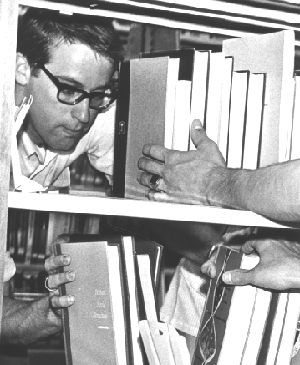Madeline Sorapure (2006) sums up the inherent difficulty in trying to rethink traditional, paper-based composition noting “…in writing essays students have to worry only about working with text, and this is challenging enough. In new media compositions, students are being asked not only to use several different individual modes, but also to bring these modes together in space and time” (p. 3). Based on completion of the first phase of the Multimodal Composition Initiative at The University of Findlay, it is clear an initial shift in thinking by faculty and students has occurred, and both groups are increasingly aware of how "standard" assignments can become increasingly layered and complex when developed outside of a pure print design.
Faculty/Adjunct Perceptions of Multimodality Prior to Phase I of the Multimodal Composition Initiative
Virtually all of UF’s English Department members teach first or second year composition. Most faculty have taught composition courses for at least three years and the department is stable and functions fairly efficiently. As a new WPA and fresh out of multimodal composition training from the Digital Media and Composition Institute, I was anxious to incorporate at least one multimodal composition assignment (an assignment that expands or repackages a print project to incorporate image, audio, and movement). Even though I was in the position to enact these changes and was anxious to do so, Reid (2003) describes, “These risks are particularly high at the crucial moment when a WPA first decides to initiate coordinated motion in a community that has been stable or even entropic. It is difficult for any leader to convince her colleagues that changing itself is for the better and unsurprising then that we as WPAs often promote new curricula primarily as constituting better products for students…” (p. 21). Because our composition program operates relatively smoothly, some faculty and adjuncts hesitate to incorporate something that does not look like a paper-based text into courses that have functioned well using print-only assignments. During a Fall 2007 meeting when we discussed the possibility of incorporating multimodal assignments, several faculty had valid concerns ranging from logistical issues of faculty training, implementation, and assessment to global issues of endorsing a multimodal composition initiative and its effects on the liberal arts conception of writing and resituating the place and mission of writing within the liberal arts college. While the faculty at large embraced the idea of incorporating multimodal writing into composition courses, some members of the English faculty were more cautious.
Prior to 2007, departmental culture dictated that faculty who wanted to use technology to teach composition could, but no one had to, use technology to teach. As a result of this arrangement, several camps emerged. For example, some faculty regularly taught laptop sections of first-year composition and/or second writing requirement courses such as Electronic Rhetoric using a variety of multimodal tools. At the other end of the spectrum were faculty and adjuncts that used no technology in the classroom, not even posting syllabi or grades online. Due mainly to lack of technological knowledge, these faculty wondered how they would be able to teach students to write and to compose using multiple modes when they themselves did not have such skills. Finally, a few faculty viewed technology tools such as Blackboard as impingements on academic freedoms and directly in conflict with the goal of a liberal arts education. For these faculty, The Multimodal Composition Initiative was viewed as forcing technology use on instructors and students in “pure” writing courses rather than as an opportunity to extend students’ rhetorical skills. Moreover, while some adjuncts were technologically savvy, they did not have the same amount of time on campus to provide students with extensive instruction outside of class.
All of these populations have a stake in the outcome of the Multimodal Composition Initiative. The current departmental culture allowed faculty to teach as they liked, and it is understandable that many faculty were hesitant to mess with a system that, for all intents and purposes, worked.
Compromises and Adjustments After Phase I
At the time of this writing, we have undergone Phase II of the Initiative, where all instructors are required to incorporate one “multimodal” assignment into College Writing II courses, and we have settled on a compromise that addresses the concerns of all of these groups. Our solution is to allow a range of multimodal projects as potential options for the multimodal assignment requirement. For technology-savvy faculty, common choices include web pages, audio essays, and digital films. Faculty still learning about technology can choose "lower tech" options such as requiring the insertion of images in a Microsoft Word document or even having students make collages from web or print images and write about these in a traditional print paper. This flexibility appears to have appeased the fears of faculty who remain concerned about the inclusion of multimodal composition.
